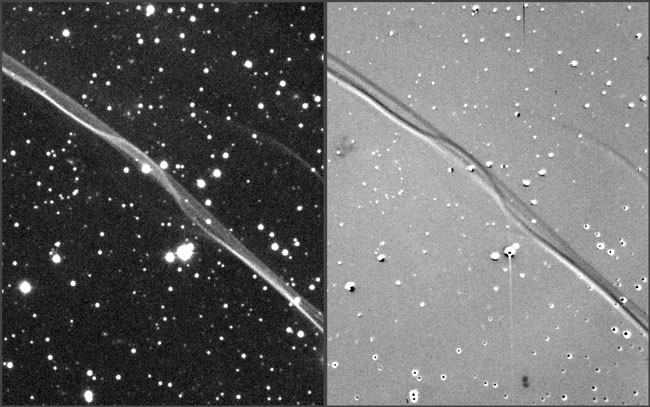Explanation: Suddenly, in the year 1006 AD, a new star appeared in the sky. Over the course of just a few days, the rogue star became brighter than the planet Venus. The star, likely the talk of everyone who could see it, was recorded by people who lived in areas now known as China, Egypt, Iraq, Italy, Japan, and Switzerland. The celestial newcomer, now known to be a supernova, took months to fade. Modern observations have now been used to measure the speed of the still-expanding shock wave, allowing a better estimate of its distance and hence a better estimate of the true brightness of the supernova. It turns out SN 1006 likely achieved an apparent visual magnitude of -7.5, making it the brightest supernova on record. The shock wave was imaged in 1998 from CTIO (left panel), and then subtracted from a similar image taken in 1986 (right panel), highlighting the relative expansion.
Tomorrow's picture: Sun Burst
1999 2000 2001 2002 2003 2004 2005 2006 2007 2008 2009 2010 2011 2012 2013 2014 2015 2016 2017 2018 2019 2020 2021 2022 2023 2024 2025 |
Yanvar' Fevral' Mart Aprel' Mai Iyun' Iyul' Avgust Sentyabr' Oktyabr' Noyabr' Dekabr' |
NASA Web Site Statements, Warnings, and Disclaimers
NASA Official: Jay Norris. Specific rights apply.
A service of: LHEA at NASA / GSFC
& Michigan Tech. U.
|
Publikacii s klyuchevymi slovami:
SN 1006 - Sverhnovye - udarnye volny
Publikacii so slovami: SN 1006 - Sverhnovye - udarnye volny | |
Sm. takzhe:
Vse publikacii na tu zhe temu >> | |
